Projects
Past Projects . . . . . . . . . . . . . . . . . . . . . . . . . . . . . . . . . . . . . . . . . . . . . . . . . . . . . . . . . . . . . . . . . . . . . . . . . . . . . . . . . . . . . . . . . . . . . . . . . . . . . . . . . . . . . . . . . . . . . . . . . . . . . . . . . . . . . . . . . . . . . . . . . . . . . . . . . . . . . . . . . . . . . . . . . . . . . . . . . . . . . . . . . . . . . . . . . . . . . . . . . . . . . . . . . . . . . . . . . . . . . . . . . . . . . . . . . . . . . . . . . . . . . . . . . . . . . . . . . . . . . . . . . . . . . . . . . . . . . . . . . . . . . . . . . . . . . . . . . . . .
International Projects

EMC²
Embedded multi-core systems for mixed criticality applications in dynamic and changeable real-time environmentsJU grant nr. 621429 | ARTEMIS/0001/2013
Embedded systems enhance mechatronic products with cheaper and new functionalities and, as inter-system communication enabler, strongly support today’s information society. EMC² aims to develop an innovative, sustainable service-oriented architecture for mixed criticality applications in dynamic and changeable real-time environments.
DEWI
Dependable Embedded Wireless InfrastructureJU grant nr. 621353
DEWI wants to foster Europe’s leading position in embedded wireless systems and smart (mobile) environments for both personal and professional users. DEWI deals with more than 20 industry driven application cases for citizens and professional users.
P-SOCRATES
Parallel SOftware framework for time-CRitical mAny-core sysTEmSFP7-ICT-611016
The aim of P-SOCRATES is to allow current and future applications with high-performance and real-time requirements to fully exploit the huge performance opportunities brought by the most advanced many-core processors, whilst ensuring a predictable performance and maintaining (or even reducing) development costs of applications.
CONCERTO
Guaranteed Component Assembly with Round Trip Analysis for Energy Efficient High-integrity Multi-core SystemsJU grant nr. 333053
CONCERTO will deliver a reference multi-domain architectural framework for complex, highly concurrent, and multi-core systems, where non-functional properties (including real-time, dependability, and energy management) will be established for individual components, derived for the overall system at design time, andpreserved by construction and monitoring at run-time.
Arrowhead
Ahead of the futureJU grant nr. 332987
Our society is facing both energy and competitiveness challenges. These challenges are tightly linked and require new dynamic interactions between energy producers and energy consumers, between machines, between systems, between people and systems, etc. This cooperative automation is enabled by the technology developed around the Internet of Things and Service Oriented Architectures.
ENCOURAGE
Embedded iNtelligent COntrols for bUildings with Renewable generAtion and storaGEJU grant nr. 269354
The ENCOURAGE project aims to develop embedded intelligence and integration technologies that will directly optimize energy use in buildings and enable active participation in the future smart grid environment. The desired energy savings will be achieved in three complementary ways.
SENODs
Sustainable ENergy-Optimized DatacentersFCOMP-01-0124-FEDER-012988
Data centers increasingly constitute a critical backbone of the worldwide information technology (IT) infrastructure, but right now power and cooling in a data center cost more than the IT equipment. The SENODs project will rectify that.
EMMON
EMbedded MONitoringArtemis 100036
EMMON goal is to allow monitoring huge geographical extensions in real time, obtaining information from the field of observation as variations occur, using Wireless Sensor Network (WSN) devices – small communicating & cooperative nodes with sensors.
RECOMP
Reduced Certification Costs for Trusted Multi-core PlatformsArtemis 100202
RECOMP research project will establish methods, tools and platforms for enabling cost-efficient certification and re-certification of safety-critical systems and mixed-criticality systems, i.e. systems containing safety-critical and nonsafety-critical components.
InSecTT
Intelligent Secure Trustable ThingsH2020-ECSEL-2019-1-IA, Grant nr 876038
InSecTT will foster cooperation between big industrial players from various domains, a number of highly innovative SMEs distributed all over Europa and cutting-edge research organisations and university. The project features a big variety of industry-driven use cases embedded into various application domains, i.e. smart infrastructure, building, manufacturing, automotive, aeronautics, railway, urban public transport, maritime as well as health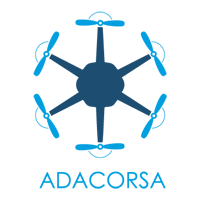
ADACORSA
Airborne data collection on resilient system architecturesH2020-ECSEL-2019-2-RIA, Grant Nr 876019
ADACORSA targets to strengthen the European drone industry and increase public and regulatory acceptance of BVLOS (beyond visual line-of-sight) drones, by demonstrating technologies for safe, reliable and secure drone operation in all situations and flight phases.
MANTIS
Cyber Physical System Based Proactive Collaborative MaintenanceECSEL JU Grant nr. 662189
The overall concept of MANTIS is to provide a proactive maintenance service platform architecture based on Cyber Physical Systems that allows to estimate future performance, to predict and prevent imminent failures and to schedule proactive maintenance.
EnerGAware
Energy Game for Awareness of energy efficiency in social housing communitiesEuropean Union, grant nr. 649673
The overall objective of the EnerGAware project is to reduce energy consumption and emissions between 15-30% in a sample of European social housing by changing the energy efficiency behaviour of the social tenants through the implementation of a serious game linked to the real energy use of the participants’ homes.
CarCoDe
Platform for Smart Car to Car Content DeliveryITEA2 Nº 11037, QREN Nº 30345
CarCoDe will develop a software platform for the automotive domain. The aim of this software is to generate a readable traffic service domain which displays all information related to all automotive users (car drivers, truck operators, traffic management planners, etc).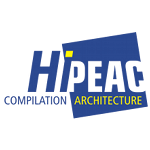
HiPEAC 3
European Network of Excellence on High Performance and Embedded Architecture and CompilationFP7-ICT-287759
HiPEAC's mission is to steer and increase the European research in the area of high-performance and embedded computing systems; stimulate cooperation between academia and industry computer architects and tool builders.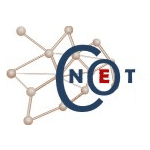
CONET
Cooperating Objects NETwork of excellenceFP7-ICT-224053
The main goal of CONET is to build a strong community in the area of Cooperating Objects capable of conducting the needed research in this area that encompasses embedded systems, pervasive computing and wireless sensor networks.
CMU-PT
CMUPortugalThe CMU-Portugal Program is a partnership between the Carnegie Mellon University (CMU, Pittsburgh, USA) and the Portuguese Government, aiming at creating top level and internationally recognized education and research programs in Information and Communication Technologies (ICT).
Smartskin
Densely Instrumented Physical InfrastructuresFCOMP-01-0124-FEDER-020312
SmartSkin objectives: (i) Create algorithms for computing certain aggregate quantities with a low time-complexity; (ii) Implement them; (ii) Incorporate them in feedback-control theory; (iii) Show the usefulness of new solutions to an application of importance for the future.
REJOIN
REal-time scheduling on multicore processors: addressing two open problems JOINtlyREal-time scheduling on multicore processors: addressing two open problems JOINtly
ArtistDesign
Network of Excellence on Embedded Systems DesignICT-FP7-214373
The ArtistDesign NoE implements a Joint Programme of Activities in the area of Embedded Systems Design, composed of: Integration Activities (JPIA), Research Activities (JPRA), Activities for Spreading Excellence (JPASE) and Management Activities (JPMA).Industry Driven
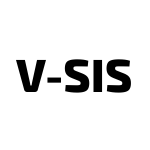
V-SIS
Sistema de Validação de Sistemas CríticosQREN - SI I&DT Nr. 38923
The V-SIS project proposes addressing the challenge in automotive and aeronautics sectors of the creation of a critical systems validation competence centre, leveraging the capability of Portugal to compete worldwide.
ENCOURAGE
Embedded iNtelligent COntrols for bUildings with Renewable generAtion and storaGEJU grant nr. 269354
The ENCOURAGE project aims to develop embedded intelligence and integration technologies that will directly optimize energy use in buildings and enable active participation in the future smart grid environment. The desired energy savings will be achieved in three complementary ways.
SENODs
Sustainable ENergy-Optimized DatacentersFCOMP-01-0124-FEDER-012988
Data centers increasingly constitute a critical backbone of the worldwide information technology (IT) infrastructure, but right now power and cooling in a data center cost more than the IT equipment. The SENODs project will rectify that. Industry leader: Portugal Telecom
Industry leader: Portugal Telecom
EMMON
EMbedded MONitoringArtemis 100036
EMMON goal is to allow monitoring huge geographical extensions in real time, obtaining information from the field of observation as variations occur, using Wireless Sensor Network (WSN) devices – small communicating & cooperative nodes with sensors. Industry leader: Critical Software SA
Industry leader: Critical Software SA
RECOMP
Reduced Certification Costs for Trusted Multi-core PlatformsArtemis 100202
RECOMP research project will establish methods, tools and platforms for enabling cost-efficient certification and re-certification of safety-critical systems and mixed-criticality systems, i.e. systems containing safety-critical and nonsafety-critical components.


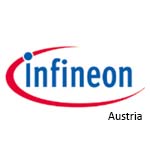 Industry leaders: Infineon Technologies Austria AG, EADS, Thales, Kone
Industry leaders: Infineon Technologies Austria AG, EADS, Thales, Kone
FLOYD
5G/SDN Intelligent Systems For LOw latencY V2X communications in cross-Domain mobility applicationsAAC nº 04/SI/2019 - Grant nr 045912
FLOYD aims at building a technological stack offering high-performance services providing seamless connectivity and computing services to vehicles.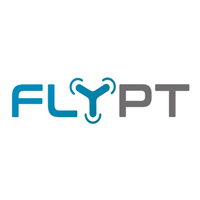
FLY-PT
Mobilizar a indústria aeronáutica nacional para a disrupção no transporte aéreo urbano do futuroAviso 14/SI/2019, Mobilizador nr. 46079
The FLY.PT project aims to develop products and services in an integrated way and with a unique global vision, based on a demonstrator of an urban and electric multimodal transport system. This new transport system combines an autonomous electric vehicle with an autonomous aerial vehicle by coupling / uncoupling a passenger cabin, allowing for horizontal and vertical mobility with minimal passenger intervention.
PANORAMA
Boosting Design Efficiency for Heterogeneous SystemsPOCI-01-0247-FEDER-040194 | grant nr. 40194
The goal of Panorama is to research into model-based methods and tools to master design and development of heterogeneous systems by heterogeneous parties, and provide best practice and guidance for development. To that end, the main line of action is extending the scope of current system level approaches by enhancing existing abstract performance meta-models to be suitable for heterogeneous hardware, and heterogeneous function domains.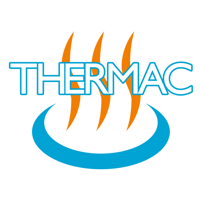
THERMAC
Thermal-aware Resource Management for Modern Computing Platforms in the Next Generation of AircraftClean Sky 2 H2020-CS2-CFP08-2018-01 nr. 832011
The main goal of the THERMAC project for the next generation of small aircraft transportation (SAT) systems is twofold: (i) to reduce the operational temperature and; (ii) to increase the guaranteed performance of the targeted computing platform, by means of software-based resource management. Industry leader: Honeywell
Industry leader: Honeywell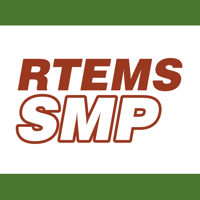
RTEMS SMP
RTEMS Pre-Qualification (ECSS) for SMPRTEMS SMP is a 24-month project sponsored by the European Space Agency (ESA). The main goal of the project is to enable European space missions to use RTEMS SMP as a software product in criticality category C, following the ECSS standards (ECSS-E-ST-40C and ECSS-Q-ST-80C) for qualification purposes. The project has as partners Edisoft (the prime contractor), Lero (the Irish software research centre), Jena-Optronik GmbH and embedded brains GmbH.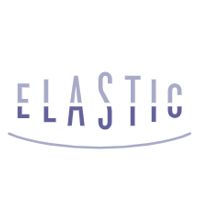
ELASTIC
A Software Architecture for Extreme-ScaLe Big-Data AnalyticS in Fog CompuTIng ECosystemsH2020-ICT-2018-2020 | Grant nr 825473
The main goal of the THERMAC project for the next generation of small aircraft transportation (SAT) systems is twofold: (i) to reduce the operational temperature and; (ii) to increase the guaranteed performance of the targeted computing platform, by means of software-based resource management.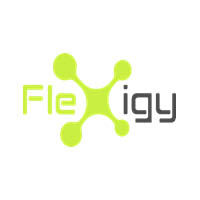
FLEXIGY
Energy Flexibility Services PlatformProjeto nº 034067 (AAC nº 03/SI/2017)
Flexigy project will tackle the problem of providing flexibility for producers and consumers of energy allowing the implementation of Smart Energy Networks and innovative mechanisms of automated demand response and control, which offer significant potential to balance energy networks but still face major economic, legal and social barriers that hinders its full market adoption.
SCOTT
Secure COnnected Trustable ThingsGrant nr. 737422
SCOTT will focus on wireless sensor and actuator networks and communication in the areas of mobility, building & home / smart infrastructure, production / industrial automation as well as health. SCOTT will enable efficient, trustworthy connectivity and facilitate ubiquity of intelligent embedded systems and systems of systems, thus essentially contributing to burning issues in Automated Vehicles, Industry 4.0, etc.
Productive4.0
Electronics and ICT as enabler for digital industry and optimized supply chain management covering the entire product lifecycleGrant nr. 737459
The main objective is to achieve improvement of digitizing the European industry by electronics and ICT. Ultimately, the project aims at suitability for everyday application across all industrial sectors – up to TRL8. What makes the project unique is the holistic system approach of consistently focusing on the three main pillars: digital automation, supply chain networks and product lifecycle management, all of which interact and influence each other.
KhronoSim
Control real-time physical and virtual systemsProject nr. 17611, ref. POCI-01-0247-FEDER-017611
The project aims to develop a platform for closed mesh loop Cyber Physical Systems test and extensible modular, usable in Multiple Domains and Market Sectors, which allows control in strict real-time of simulation models and integration creation of a test environment in closed loop, that allows easily switch between Physical and Virtual Systems as needed in the test scenarios.
DSGrid
Digital Systems Technology for Next Generation Grid AutomationPOCI-01-0247-FEDER-011122 subcontract
DSGrid is a multidisciplinary project that brings together areas of knowledge of (i) power, (ii) automation and protection, (iii) communications, (iv) real-time systems, (v) embedded systems, (vi) cybersecurity and (vii) information and software technologies. This fully digital architecture will transform substation to an advanced integrated automation, control, protection, monitoring and information platform.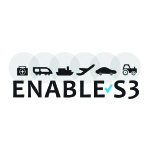
ENABLE-S3
European Initiative to Enable Validation for Highly Automated Safe and Secure SystemsECSEL JU Grant nr. 692455-2
ENABLE-S³ will pave the way for accelerated application of highly automated and autonomous systems in the mobility domains automotive, aerospace, rail and maritime as well as in the health care domain. The resulting validation framework will ensure Europeans Industry competitiveness in the global race of automated systems with an expected market potential of 60B€ in 2025.
SafeCOP
Safe Cooperating Cyber-Physical Systems using Wireless CommunicationECSEL JU Grant nr. 692529-2
SafeCOP targets safety-related Cooperating Cyber-Physical Systems (CO-CPS) characterised by use of wireless communication, multiple stakeholders, dynamic system definitions (openness), and unpredictable operating environments. SafeCOP will provide an approach to the safety assurance of CO-CPS, enabling thus their certification and development.
CarCoDe
Platform for Smart Car to Car Content DeliveryITEA2 Nº 11037, QREN Nº 30345
CarCoDe will develop a software platform for the automotive domain. The aim of this software is to generate a readable traffic service domain which displays all information related to all automotive users (car drivers, truck operators, traffic management planners, etc).
Smartskin
Densely Instrumented Physical InfrastructuresFCOMP-01-0124-FEDER-020312
SmartSkin objectives: (i) Create algorithms for computing certain aggregate quantities with a low time-complexity; (ii) Implement them; (ii) Incorporate them in feedback-control theory; (iii) Show the usefulness of new solutions to an application of importance for the future.
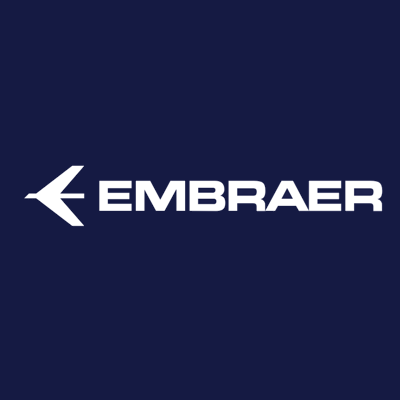 Industry leaders: Embraer, Critical Materials
Industry leaders: Embraer, Critical Materials
R-FIELDBUS
High Performance Wireless Fieldbus in Industrial Multimedia-Related EnvironmentIST-1999-11316
The R-Fieldbus project aims the development of an innovative high-performance radio Fieldbus with support of wireless stations and segments (mobile or static) and also transparent support of industrial multimedia traffic. Industry leader: Siemens AG
Industry leader: Siemens AG
REMPLI
Real-time Energy Management via Power-lines and InternetNNE5-2001-00825
The major goal of the project is to provide real time collection and control system for the energy (electrical or other) distribution and consumption, using power lines and Internet for communication.
 Industry leaders: TCE, iAd
Industry leaders: TCE, iAdNetworks of Excellence

HiPEAC 3
European Network of Excellence on High Performance and Embedded Architecture and CompilationFP7-ICT-287759
HiPEAC's mission is to steer and increase the European research in the area of high-performance and embedded computing systems; stimulate cooperation between academia and industry computer architects and tool builders.
CONET
Cooperating Objects NETwork of excellenceFP7-ICT-224053
The main goal of CONET is to build a strong community in the area of Cooperating Objects capable of conducting the needed research in this area that encompasses embedded systems, pervasive computing and wireless sensor networks.
CMU-PT
CMUPortugalThe CMU-Portugal Program is a partnership between the Carnegie Mellon University (CMU, Pittsburgh, USA) and the Portuguese Government, aiming at creating top level and internationally recognized education and research programs in Information and Communication Technologies (ICT).
ARTIST2
Network of Excellence on Embedded Systems DesignIST-004527
The objective of ARTIST2 is to strengthen European research in Embedded Systems Design, and promote the emergence of this new multi-disciplinary area.
ArtistDesign
Network of Excellence on Embedded Systems DesignICT-FP7-214373
The ArtistDesign NoE implements a Joint Programme of Activities in the area of Embedded Systems Design, composed of: Integration Activities (JPIA), Research Activities (JPRA), Activities for Spreading Excellence (JPASE) and Management Activities (JPMA).
Cabernet (Esprit)
Esprit Network of Excellence in Distributed Computing Systems ArchitecturesEP-21035
The mission of CaberNet is to coordinate top-ranking European research in distributed and dependable systems, to make that research accessible to governments and industries and to further the quality of education concerning such systems.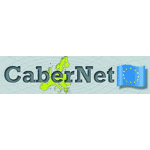
CaberNet
Network of Excellence in Distributed Computing Systems ArchitecturesIST-2000-25088
The mission of CaberNet is to coordinate top-ranking European research in distributed and dependable systems, to make that research accessible to governments and industries and to further the quality of education concerning such systems.CONET Clusters

COTS4QoS
COTS-based Architecture for QoS in Large-Scale Distributed Embedded SystemsCONET Cluster
Achieving Quality-of-Service in large-scale distributed embedded systems using standard communication protocols and Commercial-Off-The-Shelf (COTS) hardware platforms and operating systems.
SDP
Scalable Data ProcessingCONET Cluster
Develop distributed algorithms for computing common aggregated quantities (such as MIN, MAX, AVERAGE) of sensor readings and achieve this across sensor networks of different owners.
RMA
Resource Management and AdaptationCONET Cluster
The key objective is the development of mechanisms for reliable assessment of the current interference situation as a basis for dynamic resource adaptation that will provide better end-to-end system performance and quality of service. This requires a cross-layer coordination of several protocol components while satisfying external constraints like technology, fairness, transmission quality and legal constraints.
UICO
Ubiquitous Integration of Cooperating ObjectsCONET Cluster
Create an ecosystem where intelligent networked systems are composed of wired/wireless smart embedded devices that interact with the physical environment and with the enterprise environment pursuing well-defined system goals.Fundamental Research

Dear-COTS
Distributed Embedded ARchitectures using Custom Off-The-Shelf ComponentsPRAXIS/P/EEI/14187/1998
The main purpose of this project is the specification of an architecture based on the use of commercial off-the-shelf (COTS) components, able to support distributed computer controlled systems where reliability and timeliness are major requirements.
CIDER
Communication Infrastructure for Dependable Evolvable Real-time systemsPOSI/1999/CHS/33139
This project focus os Switches for Ethernet networks and their usage to overcame problems and limitations of traditional networks and thus eventually support dependable applications with real-time requirements
IBEX
Quantitative methods for cyber-physical programmingAdvancements in computational power and miniaturization integrate software into industrial infrastructures. This emerging cyber-physical paradigm emphasizes close interactions with physical processes. Mathematical foundations are crucial, but challenges such as sensor noise and behavioral comparison complexity need addressing. This project aims to establish quantitative foundations without focusing on specific languages for cyber-physical systems.
CRUAV
Cooperative Trajectory Planning for Real-Time Surveillance in UAV-assisted Intelligent Transportation SystemsCMU-EXPL 2019
This project investigates cooperative Unmanned Aerial Vehicles (UAVs), a.k.a. drones, for real-time surveillance of intelligent transportation systems in smart cities.
RETINA
REal-Time support Infrastructure and Energy management for Intelligent carbon-Neutral smArt citiesNORTE-01-0145-FEDER-000062
The concept of Smart Cities encompasses a collection of applications and services meant to improve the overall efficiency of the city's processes, and ultimately the well-being of the citizens. The RETINA project will address complementary aspects of Support Infrastructure for Smart City (SISC) applications, both at the level of enabling technologies as well as on selected smart city applications.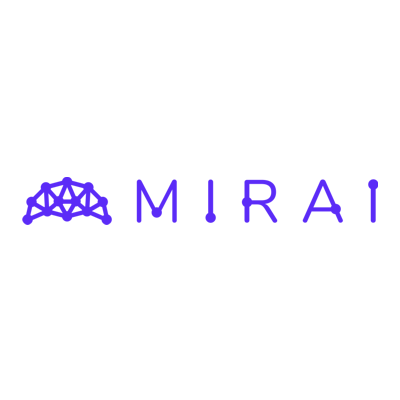
MIRAI
Machine intelligence techniques for smart and sustainable planning and operation IoT and Edge computing applicationsMIRAI Framework Building Blocks (MFBB) based on AI techniques will enable the smart and sustainable planning and operation of IoT and edge computing applications. This will supplement the traditional vertical scaling approach to the cloud with the horizontal scaling of IoT and edge computing applications amongst edge devices.
VALU3S
Verification and Validation of Automated Systems’ Safety and SecurityIn VALU3S, 13 use cases with specific safety, security and privacy requirements will be studied in detail. Several state-of-the-art V&V methods will be investigated and further enhanced in addition to implementing new methods aiming for reducing the time and cost needed to conduct V&V of automated systems. The V&V methods investigated are then used to design improved process workflows for V&V of automated systems.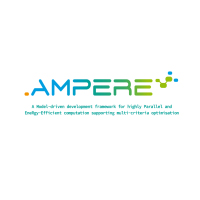
AMPERE
A Model-driven development framework for highly Parallel and EneRgy-Efficient computation supporting multi-criteria optimisationICT-01-2019-RIA | grant nr. 871669
The vision of AMPERE is that there is a clear necessity of developing a new generation of code synthesis methods and tools capable to implement correct-by-construction systems, in which the constraints captured by the system model are efficiently transformed to the parallel programming models supported by the underlying parallel heterogeneous platform, whilst providing the level of performance required.
Aquamon
Dependable Monitoring with Wireless Sensor Networks in Water EnvironmentsContinuous monitoring of aquatic environments using water sensors is important for several applications related to the prevention of accidents, to water resources and aquaculture management and recreational activities. AQUAMON will develop a dependable monitoring platform for application in aquatic environments using wireless sensor networks, adressing data communication quality problems over water surfaces, transmission predictability, and data quality.
ARNET
Airborne Relaying Networks for Reliable and Secure Mobile CommunicationsPOCI-01-0145-FEDER-029074
ARNET aims to design wireless communication protocols to enhance network reliability and security in Airborne Relaying NETworks (ARNET) for Long-Term Evolution (LTE) users on the ground. ARNET will integrate advanced multi-hop wireless communication for relaying heterogeneous data of LTE users while ensuring service area coverage. Consequently, this project is a significant step towards realising the vision of an airborne relaying network.
PReFECT
Predictable Multiprocessor Platforms for Embedded Safety Critical SystemsPOCI-01-0145-FEDER-029119
The goal of this PReFECT is to optimize the usage of multicore processors in safety-cThe project results will be demonstrated in two industrial use-cases related to the avionics and automotive domains.ritical platforms while guaranteeing that all the timing requirements of the applications are respected. multicore processors in safety-critical. The project results will be demonstrated in two industrial use-cases related to the avionics and automotive domains.
REASSURE
Secure Runtime Verification for Reliable Real-Time Embedded SoftwareNORTE-01-0145-FEDER-028550
The goal of REASSURE is to improve over the state-of-the-art Runtime Verification (RV) approaches for RTES by developing a new framework. The framework developed in REASSURE will be validated within an industrial context. EDISOFT, a company active in critical systems, will provide a relevant case study, based on the RTEMS space-qualified operating system, and will follow the research in the project, advising the project team.
5GSDN
MAC-PHY cross-layer design and multi-objective optimisation of 5G Software defined networksPOCI-01-0145-FEDER-032218
The 5GSDN project addresses the cross-layer design of 5G (fifth generation) industrial cyber-physical wireless networks. This will enable a set of remotely controlled embedded applications in industrial IoT (Internet-of-Things) with high criticality requirements. New industrial services will be offered over wider geographical areas at lower costs and with more flexible infrastructure.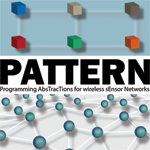
PATTERN
Programming AbsTracTions for wireless sEnsor NetworksFCOMP-01-0124-FEDER-028990
PATTERN (Programming AbsTracTions for wireless sEnsoR Networks) aims to tackle two critical challenges for the future success of WSN: (i) provide a seamless model for the development of correct applications, whilst (ii) efficiently managing and isolating multiple independent applications.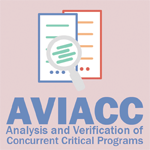
AVIACC
Analysis and Verification of Concurrent Critical ProgramsFCOMP-01-012244-FEDER-020486
The goal of the project is to extract models from concurrent programs and building an automatic framework for checking (temporal) properties using verification technologies, both static and run-time.
REGAIN
Real-time scheduling on general purpose graphics processor unitsFCOMP-01-0124-FEDER-020447
This project will create a real-time scheduling theory for GPGPUs. This theory will offer (i) a model suited for describing real-time scheduling on GPGPUs, (ii) algorithms for run-time scheduling of tasks using GPGPUs and (iii) algorithms for proving, before run-time, that tasks using GPGPUs meet their deadlines. This project will also test the theory on commercially available GPGPUs.
SMARTS
Slack Management in Hierarchical Real-Time SystemsFCOMP-01-0124-FEDER-020536
This project will investigate the impact of preemption, integrate pre-emption estimation techniques and provide a framework for alternative policies in systems with available execution time (slack). The project will also explore how the developed techniques can be applied in a multicore setting.
MASQOTS
Mobility mAnagement in wireless Sensor networks under Quality-of-service constraints using standard and Off-The-Shelf technologiesFCOMP-01-0124-FEDER-014922
Mobility in WSNs potentiates new applications, but for some of them (e.g. health care) the lack of network connectivity is not admissible or must be time time-bounded. MASQOTS aims at attaining reliable and real-time mobility support in WSNs, encompassing appropriate handoff, admission control, resource management and re-routing mechanisms. All this Integrating standard and COTS technologies like IEEE 802.15.4 and ZigBee.
CooperatES
QoS-Aware Cooperative Embedded SystemsPTDC/EIA/71624/2006
Quality of Service (QoS) is considered an important user demand, receiving wide attention in real-time research in general and for embeded systems in particular. The increasing pervasiveness of these devices in the everyday life is changing the way computing systems are used and interact, creating a new, highly dynamic and decentralized environment.
RESCUE
REliable and Safe Code execUtion for Embedded systemsPTDC/EIA/65862/2006
This proposal looks at an important requirement in safety critical systems -- that of supporting verifiability of software components. The proposers focus on embedded systems, thereby making the approach more manageable. The authors advocate the use of: (i) Type-based; (ii) Language-based; and (iii) Logic-based security enforcement mechanisms.
RESCORE
Real-time Scheduling on MulticoresPTDC/EIA/78141/2006
Multiprocessors have already made the transition from high-end computing to desktops and laptops. This was possible because of the miniaturization of integrated electronics system which allowed the implementation of multiprocessors on a single chip, called multicores. Now, the next step is about to begin. These multicores are targeting embedded real-time systems.
REMETER
Real-Time Networks for Distributed Computer Controlled SystemsInternal Project
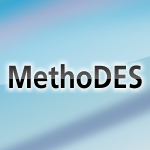
MethoDES
Methodologies and Tools for Developing Complex Real-Time Embedded SystemsPOSI/2001/37334
This project aims the proposal of a methodology and respective tools for real-time embedded systems focusing on visual programming.
TERRA
Transparent Environment for Replicated Ravenscar ApplicationsPOSI/2001/38932
This project focus on the Ada 95 Ravenscar Applications adding mechanisms to transparently support replication, and also schedulability analysis techniques to prove its real-time and fault-tolerance properties.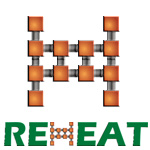
REHEAT
Real-time scheduling on heterogeneous multicore architecturesFCOMP-01-0124-FEDER-010045
Heterogeneous multicores are becoming standard building blocks as exemplified by IBM Cell and AMD Fusion but unfortunately, their use in real-time systems is complicated by the fact that the real-time scheduling theory with provably good real-time scheduling algorithms is not well-developed for such platforms. Therefore, this project aims to create provable good real-time scheduling algorithms for heterogeneous multicores.
REWIN
Real-Time Guarantees in Wireless Sensor NetworksFCOMP-01-0124-FEDER-010050
The increasing use of WSN in critical applications pushes the need to support real-time applications in theses systems.
Reflect
Reflection Mechanisms in Real-Time Embedded SystemsPOSC/EIA/60797/2004
The main goal of this project is to provide real-time systems with a generic framework for dynamic application monitoring and control, which uses the advantages offered by advanced programming paradigms, with a particular focus on reflection technologies.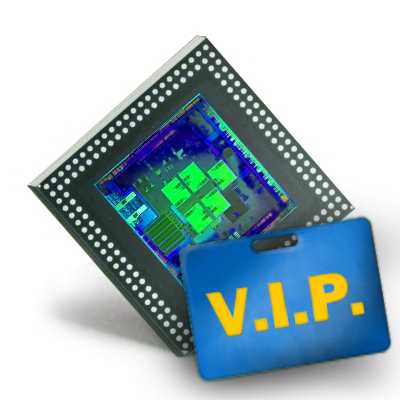
VipCore
Virtual Processor-based Multicore SchedulingFCOMP-01-0124-FEDER-015006
VipCore goal is to research frameworks and platforms to support virtual processors and parallel tasks in multiprocessors systems.
SPARTS
SimulatorInternal Project
SPARTS is a simulator of a generic embedded real-time device. It is designed to be extensible to accommodate different task properties, scheduling algorithms and/or hardware models for the wide variety of applications. SPARTS was developed to help the community investigate the behaviour of the real-time embedded systems and to quantify the associated constraints/overheads.
RePoMuC
Real-time Power management on partitioned MultiCoresFCOMP-01-0124-FEDER-015050
The goal of RePoMuC is to holistically address power management, pre-emption delays and bus contention in multicores, while being able to provide real-time guarantees. The approach aims to exploit the communalities of the different problems in terms of their dependency on memory access latencies.
REJOIN
REal-time scheduling on multicore processors: addressing two open problems JOINtlyREal-time scheduling on multicore processors: addressing two open problems JOINtlyCISTER Frameworks

WiSe-CAN
WiSe-CANCISTER/RF02/2006
Future Large-Scanel Dense Sensor Networks for Cyber-Physical Systems (CPS) will need new paradigms for distributed computation of the system-wide values. This project aims to study solutions to this issues that are highly scalable and integrate the physical dynamics with computations and communications.
CPS-SEED
Cyber Physical Systems with ScalablE and Efficient Data processingCISTER/RF01/2006
Although the IT transformation in the 20th century appeared revolutionary, a bigger change is yet to come, exemplified by the emerging cyber-physical computer systems (CPS).
ART-WiSe
Architecture for Real-Time communication in Wireless Sensor networksCISTER/RF01/2005
The purpose of the ART-WiSe framework is providing new communication architectures and mechanisms to improve the timing performance and to ensure real-time communications in wireless sensor networks (WSNs).We have defined a R&D framework, called ART-WiSe (Architecture for Real-Time communication in Wireless Sensor networks), that consists in using a two-tiered architecture to support real-time Quality-of-Service (QoS) in wireless sensor networks with new design goals.
PrioMAC
Prioritized Medium Access ControlCISTER/RF02/2005
This project aims to transfer the prioritized MAC concept (like the one used in CAN) to wireless domain with focus on real-time communication issues and collaborative distributed computing.







